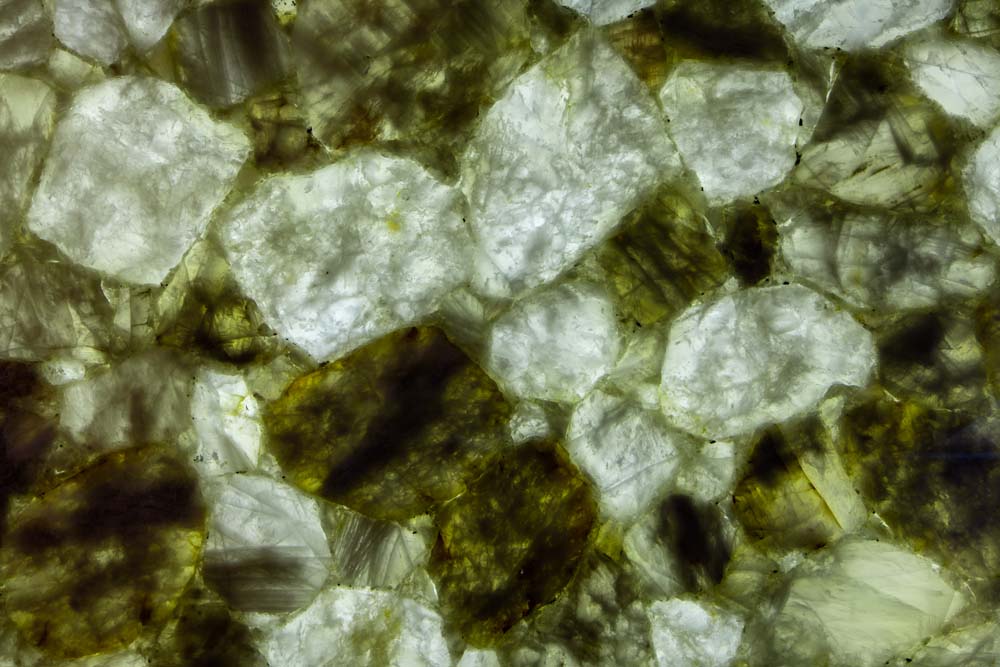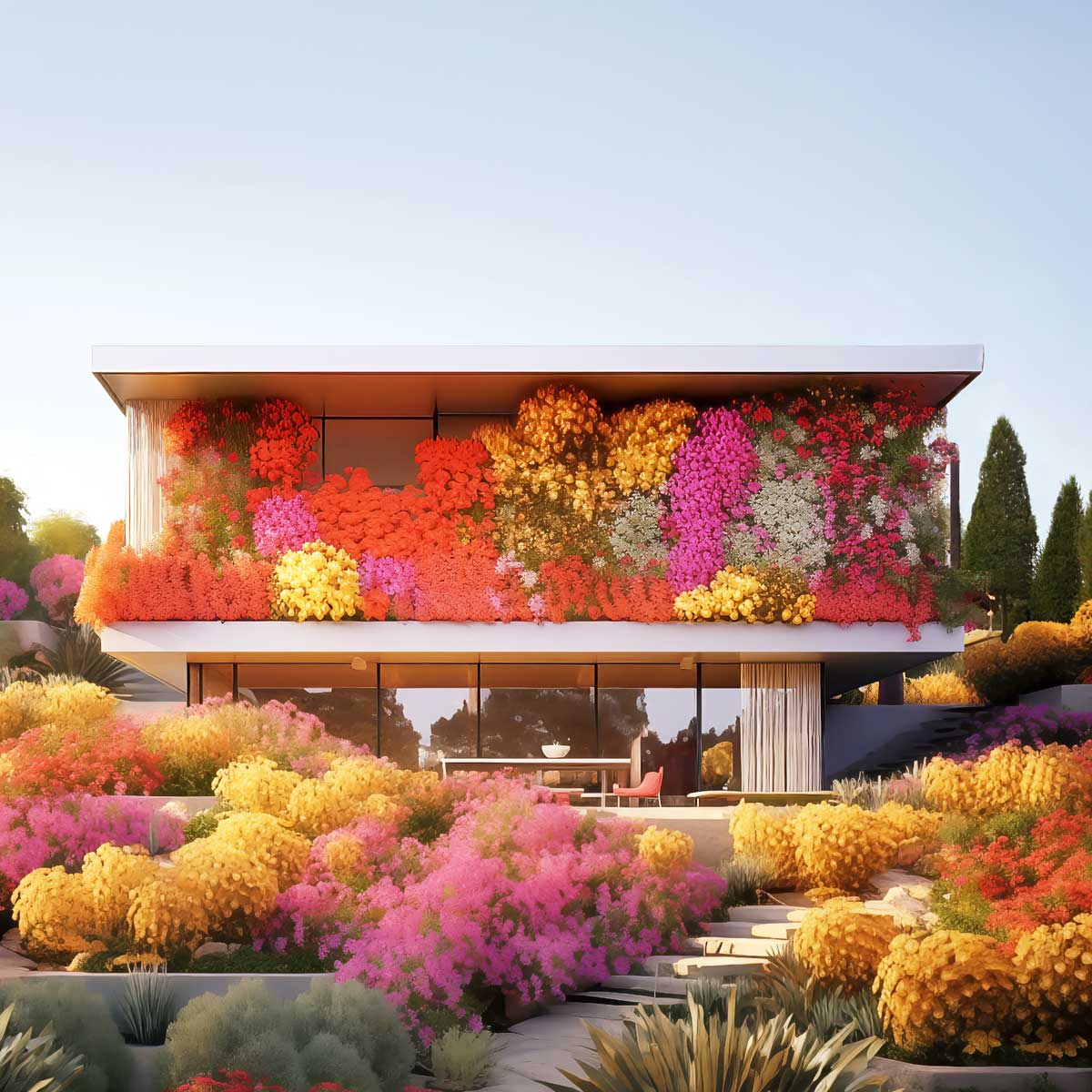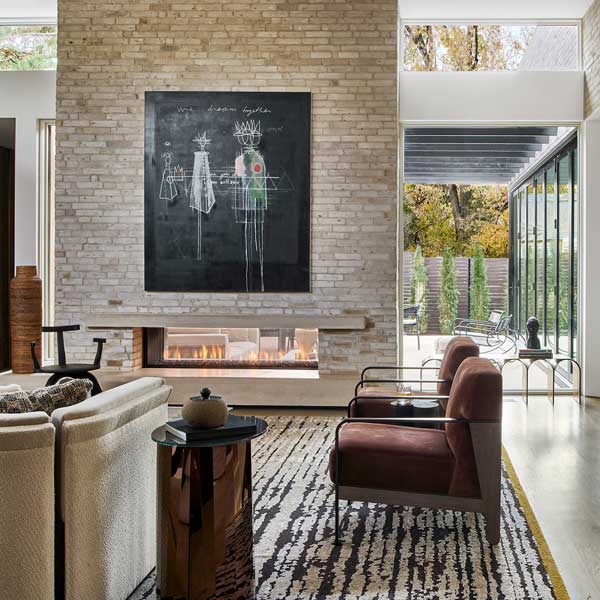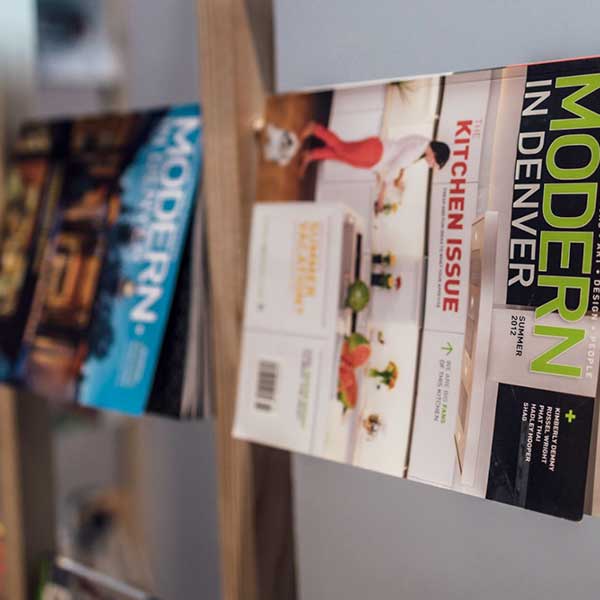There’s an alchemy to a business born in a garage—An artisan, bent over a bench, giving voice to a fomented vision. The image of the worker conjures a complete dedication to craft, with purity, expression, and vision. It Is the recipe that’s catapulted ventures out of garages from Seattle to Silicon Valley. And at the Denver-based William Ohs showroom, the convergence of these distinct materials takes center stage, with the result emerging greater than the sum of its parts.
Words: Cory Phare | Images: James Florio
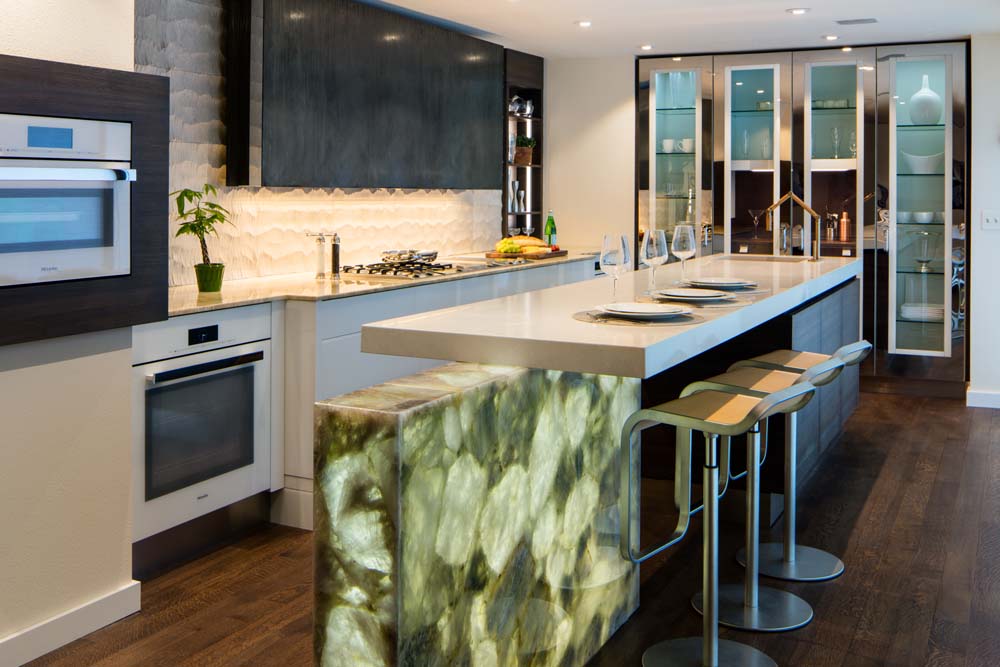
When you examine the individual pieces that make up the contemporary kitchen setup in the Cherry Creek location, you’re struck by the deep vibrancy of the materials that comprise its components. Wood. Glass. Metal. Quartz. Leather?
Individually, they could not be more different—yet somehow, they all play their parts together masterfully. That’s largely due to the work of Nabeel Faizi, Professional Kitchen Designer with William Ohs and maestro of these mellifluously merging materials.
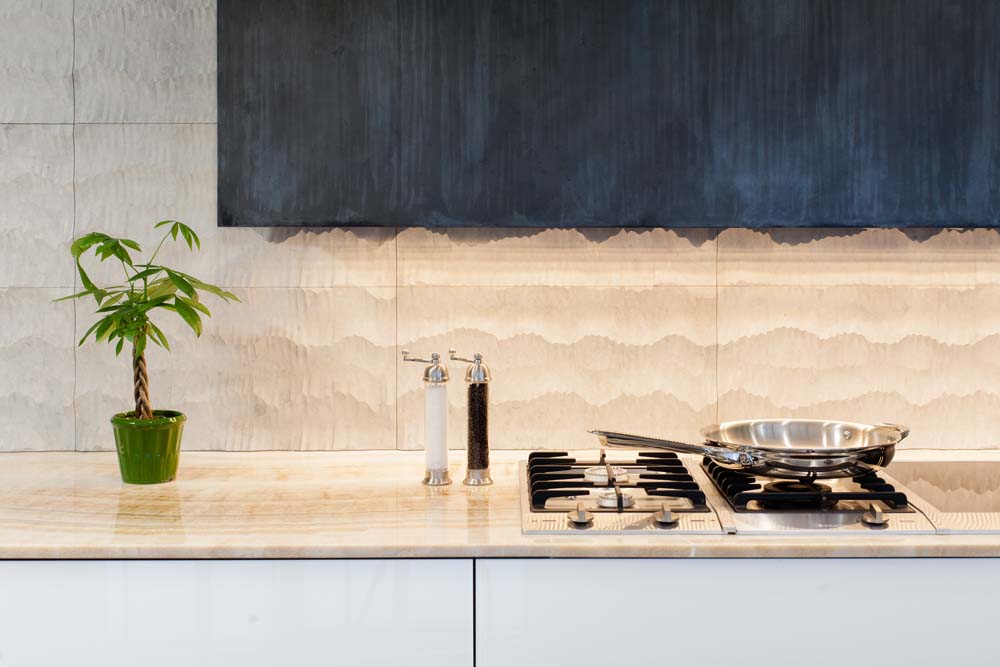
Founded by its eponymous namesake in 1972 in his garage, William Ohs now boasts 17 showrooms across North America and a 50,000-square-foot factory facility in Denver. Renowned for its high-end traditional custom kitchen design styles, the company has expanded its old world craftsmanship to its more recent transitional and contemporary lines catering to modern audiences. And according to President and Co-Owner Bob Cilli, they continue to integrate European inspiration by attending the International Kitchen Furniture Exhibition (EuroCucina) in Milan every other year.
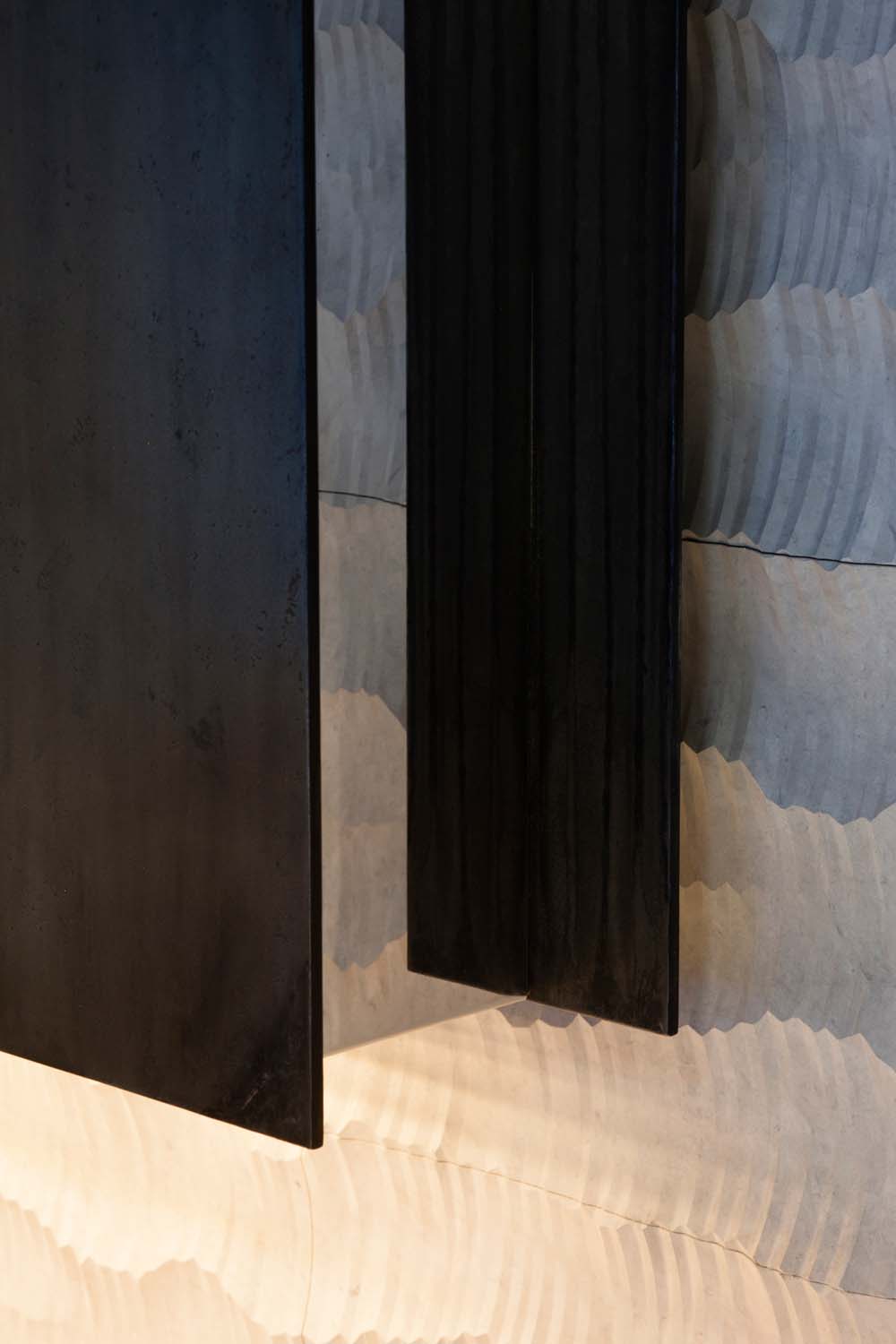
It’s not hard to see this globally influenced confluence of luxury and experimentation as you travel through the showroom kitchen. A Miele oven is surrounded by machine-fed raked walnut-sheathing. A Caesarstone slab sits on top of luminescent backlit quartz, provided by Galleria of Stone. Back-painted glass fronts to drawers and cabinets are surprisingly durable and customizable with 50 different options. A dramatic industrial cooktop hood adopts Hollywood special effect techniques with a liquid metal patina, developed by Liquid Metal Coatings. And subtly tucked in a classic chrome hutch is a leather-wrapped take on the conventional cabinet. Sourced by Edelman Leathers, the bovine veneer is beginning to boom as a contemporary trend among younger customers, according to Cilli.
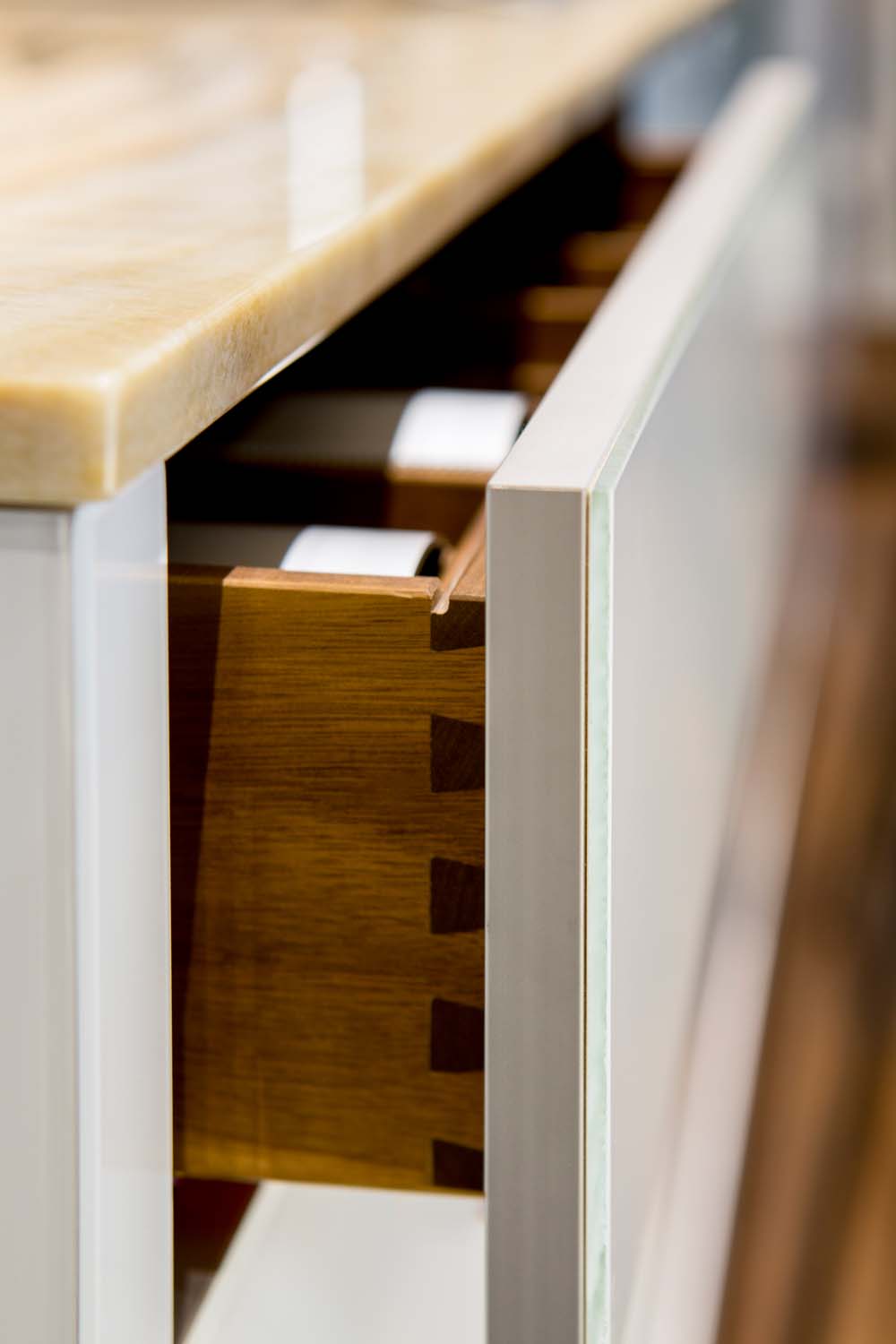
Whether created in-house or sourced from local vendors, working with such varied compositional elements obviously carries with it an innate sensitivity to aesthetic balance. With the wrong canvas, the effect can easily veer off into the ostentatious hence the frequent choice to resort to a classically clean purity for a base. “These material combinations are often applied to white kitchens,” said Faizi. “The white keeps the mix from looking too wild, yet the contrast gives the minimalist palette extra life.”
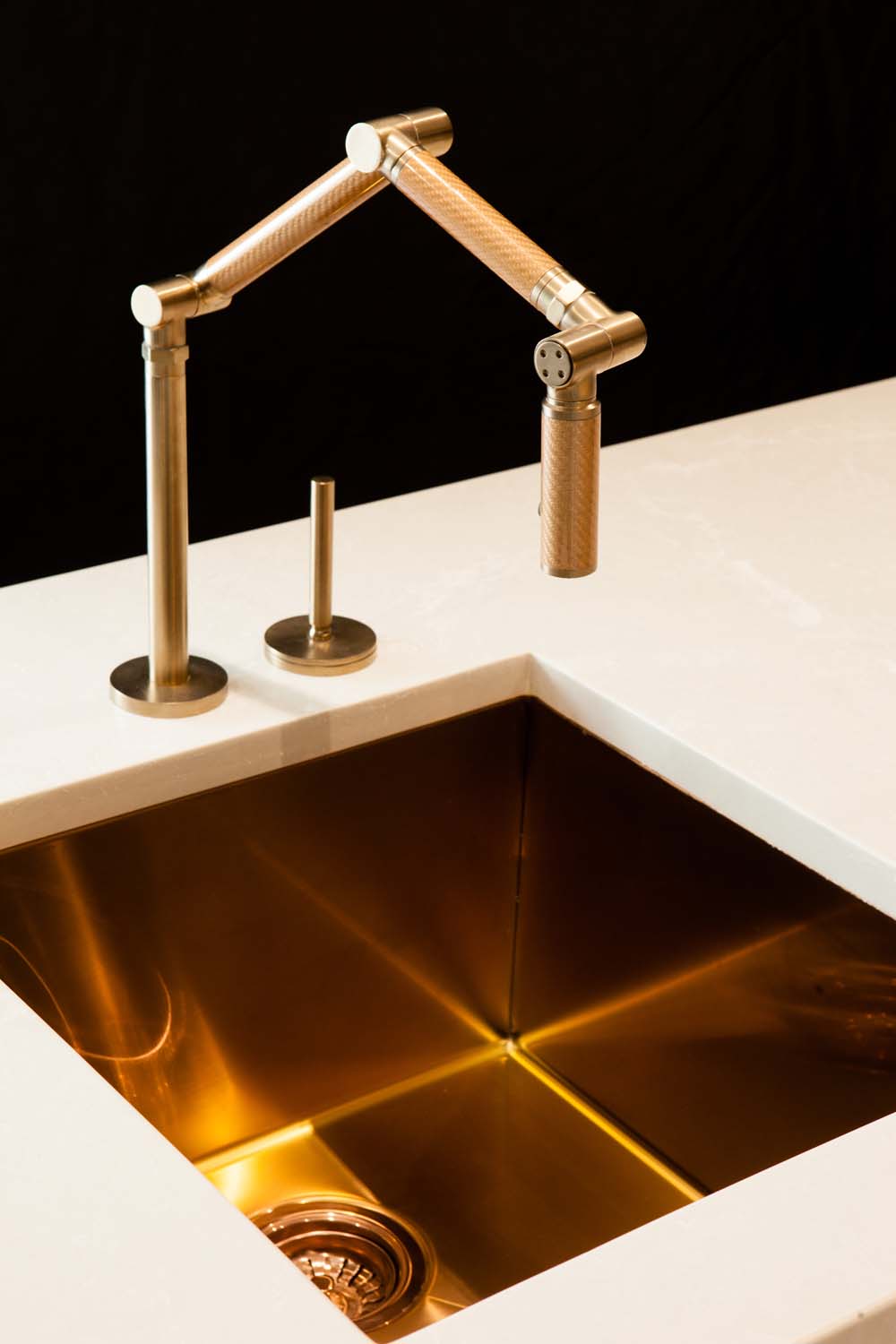
That life results in a one-of-a-kind symbiotic epicurean ecology. And like a souffle, the attenuated balance of what goes into a kitchen can help what comes out of it rise to expectations. According to Faizi, the dark, raked-walnut veneer on the island was picked to match the polished grain tone of the onyx top, which, in turn, complements the white glass fronts. “The key to mixing surfaces is to use tones that relate to either cool or warm families and to use strong contrast so the mismatch is clearly intentional and beautiful,” he said. “Pick a material that has a grain variation with a solid, and then use one of the grain tones for the surface.” The result is a complementary harmonization of color and texture.
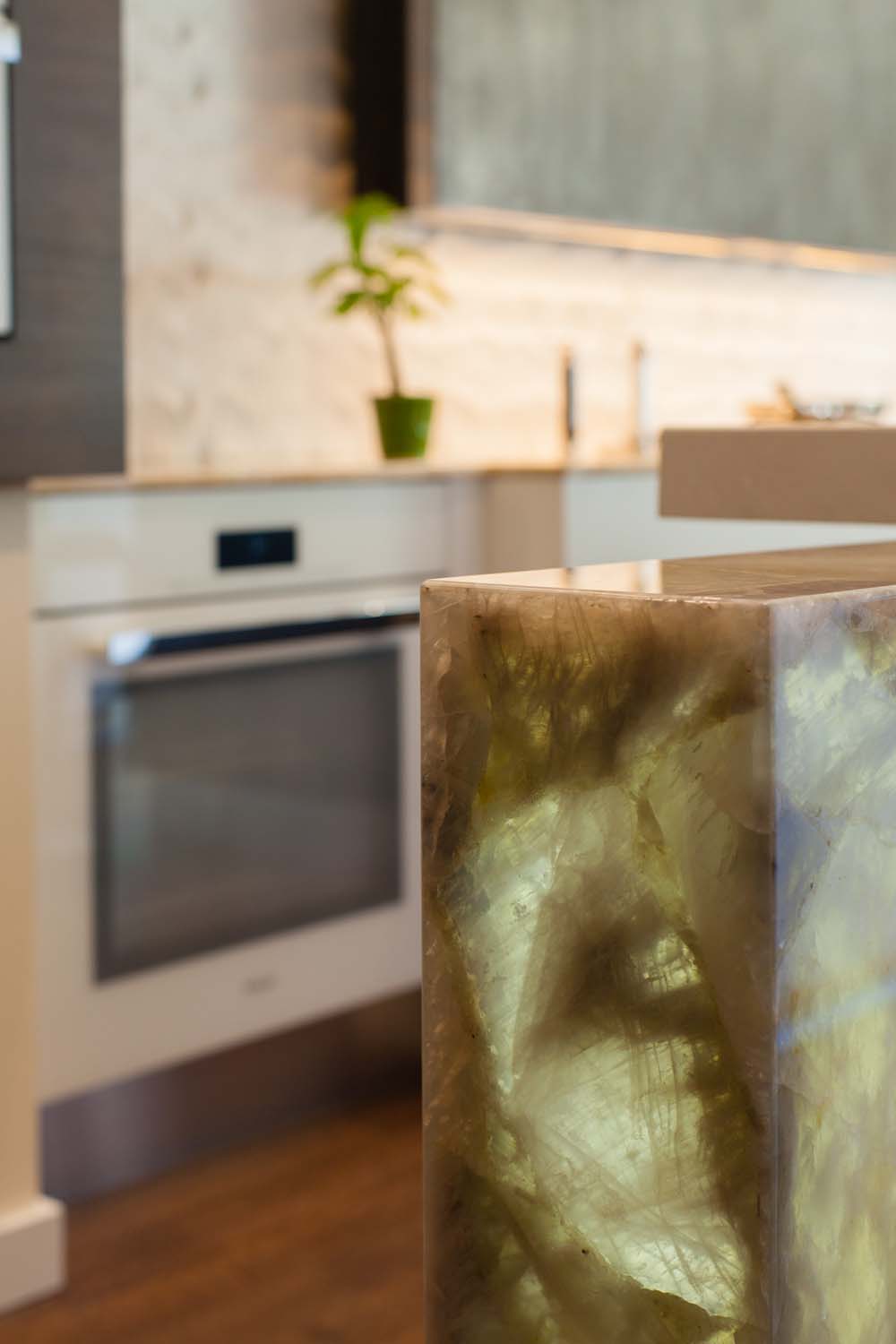
Texture, here, being a synecdoche to the incredibly complex process that goes into the hallmark of the company’s handiwork across each line. That means taking 10 steps to achieve their Sandpoint finish, from raw material through rub-through to final product. That also means attention to detail down to the screwcaps, which undergo the same treatment to ensure seamless continuity. And that, for the consumer, means a luxury kitchen that not only looks good, but holds up for decades to come. “The difference is the durability,” said Cilli. “We have people who have been with these kitchens for 25 years or more just now coming back to us for kitchen number two.”
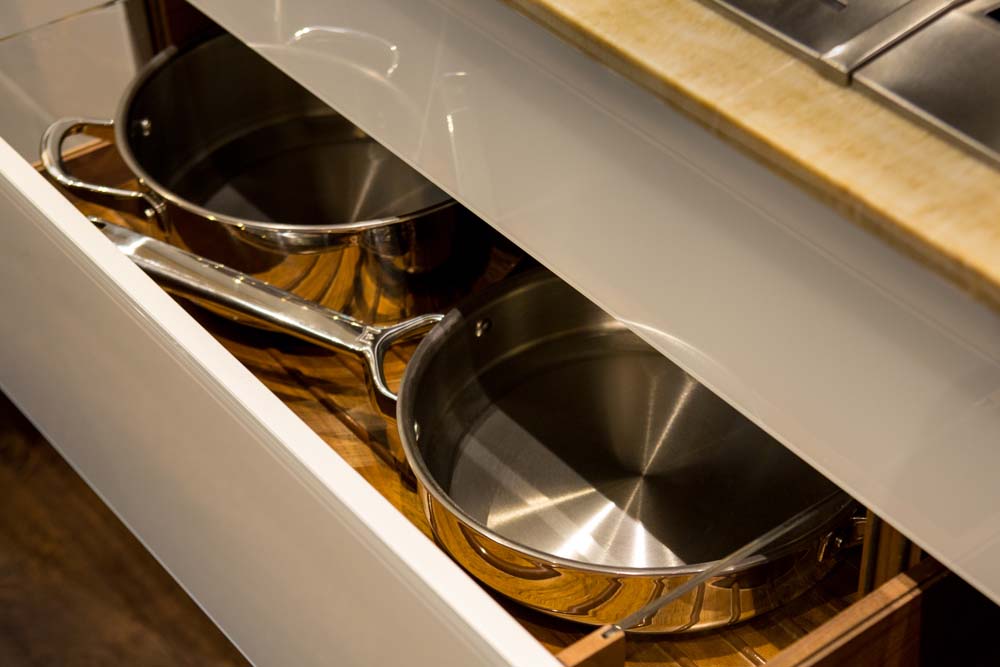
That repeat patronage spanning decades speaks volumes to the timelessness of William Ohs’ craft. It’s the combination of machine acuity and the personal touch of the artisan in the garage. It’s combining seemingly disparate elements as voices that blend together in an exponential manner. Or, as Faizi said, “It’s meeting clients’ uniquely exclusive design needs in a way that leads to unconventional features finding harmony together.” And that’s what we call a materially successful kitchen.
